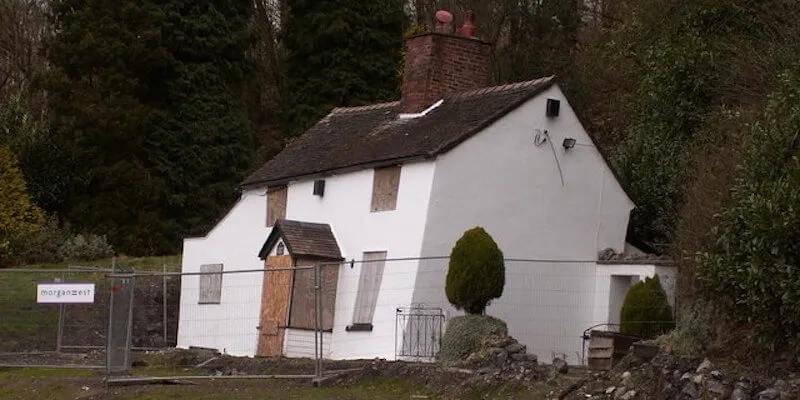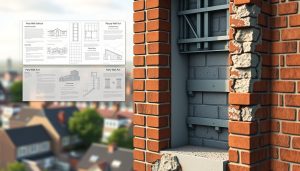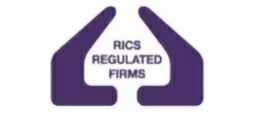Subsidence is a word that every homeowner (and buyer) dreads, but what exactly does it mean for the property, and what should you do if you come across it?
Get a Building Survey for your Wimbledon London property to check for Subsidence
Our panel of surveyors have experience in identifying signs of subsidence in properties of all ages. As part of their professional service portfolio, they offer the full range of RICS home surveys. Before purchasing a property, this means that your surveyor can advise you on significant faults and building defects. After buying a property, they can also check for newly formed cracks and any other instances where there is suspicion that a building is showing signs of structural movement and needs to be corrected.
What is Subsidence?
Subsidence is what happens to the ground, usually when a lot water is pumped from the ground. In rather basic terms it is the movement of the ground on which your building sits. It can cause your house to move about and be strained by the movement below then structural damage lets you know that the integrity of your building is in question.
Result of Subsidence
In extreme circumstances where nothing is done about the issue of subsidence your house may collapse, in real life however subsidence is quite easily fixed especially if you pick it up early.
Why does Subsidence happen?
There are numerous reasons why a building could subside but moisture is key and this can take many forms. If the house is built on clay soil, for example, the ground may expand in wet weather and contract when dry, as the moisture content in the ground increases and reduces with the seasons. The forces created by this cause minor natural movements that could disturb any structure above. Generally speaking, however, substances such as gravel and sand do not expand or contract when wet or dry but could be eroded or washed away as a result of long periods of wet weather or damaged underground drainage pipes.
What causes Subsidence?
Growing trees, shrubs and bushes close to the building can also affect the water content of soil, as plants absorb water from soil. This leaves the soil drier and more prone to shrinkage. The effect is much more pronounced in clay soils.
Some trees are much thirstier than others: willow, poplar, oak and elm are particularly thirsty and should always be kept at a maximum height, preferably twice that away from the house and, ideally, never planted at all in the average-sized garden.
Other causes of subsidence can include seemingly innocuous things like persistent traffic-induced vibrations and building work close to the house; long-term leaking underground pipes in the vicinity of the house; a history of mining in the area, etc.
How to check Subsidence?
If there is subsidence and you identify it early and if the subsidence is not severe, remedial works will be a lot easier and potentially a lot cheaper. There are obvious signs:
- cracks in wall that appear suddenly
- plaster cracks which are generally larger than harmless hairline cracks (>3mm)
- cracks located near windows and doors, or even where a porch or addition comes in
- able to be seen both on the inside and outside of the property
- dipping floors can be another sign of subsidence
- uneven flooring such as slanting skirting boards which leave gaps beneath
- irregular walking surfaces
The team have the expert eye required to distinguish cracks that are perfectly common in any Wimbledon London property from signs of subsidence and will document accordingly in their survey report.
Should I Buy a Property with a History of Subsidence?
Naturally, the question is: should you run a mile if a house has suffered some degree of structural movement at some point in its life or can you proceed with the purchase and, if so, how much should you pay? The professional advice is that you should weigh up all the salient facts before deciding.
You should discuss the problem with your mortgage broker/lender as a matter of priority, as lending criteria differs between mortgage companies and further checks will be necessary, as some may not lend on a subsidence affected properties at all.
Request evidence from the seller that any previous subsidence problem has been resolved, such as details of work done (i.e. underpinning, monitoring) and the date of completion.
Research insurance options for property with a history of subsidence. Regular home insurance isn’t likely to be available, or only at an extremely high cost, but there are plenty of niche insurers out there.
How much should you Pay for Subsidence?
It is plain to see that, naturally, a house historically or presently suffering from subsidence must logically be worth less because of the structural movement issue. However, what is indeterminable is how much less it is worth. Every house is different and the only two people who can really ascertain what is deemed to be a reasonable figure are the potential buyer and seller.
This is where a RICS Building Survey can work to the buyer’s advantage as the report will provide you with a detailed analysis of the structural condition of the property, putting you in the best position possible to make an informed decision about whether you should proceed with the transaction as planned, ask the seller to make good the problem areas, negotiate the purchase price or even withdraw from the sale.
The team members are ready to help you talk through your next property purchase or provide you with an instant survey quote.
















